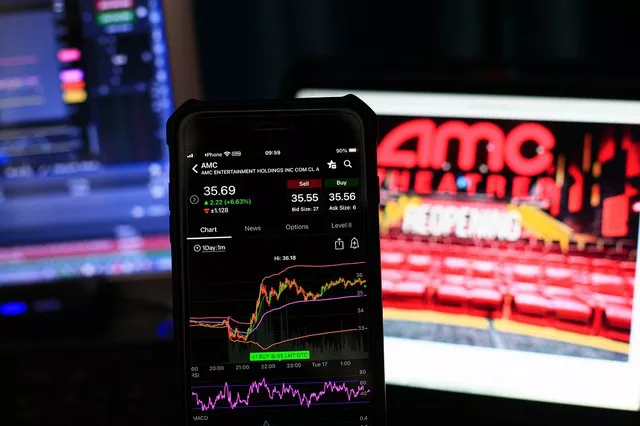Introduction
In the dynamic world of finance, futures contracts play a pivotal role in enabling investors to hedge risks and speculate on price movements of various underlying assets. Among the multitude of futures contracts available, E-mini futures have gained significant popularity in recent years, offering traders unique advantages and opportunities. In this article, we delve into the distinctions between traditional futures contracts and E-mini futures, elucidating their characteristics, functionalities, and practical implications for traders and investors.
What Are Futures Contracts?
Futures contracts are standardized agreements to buy or sell a specified asset at a predetermined price on a future date. These contracts facilitate price discovery and risk management for market participants across various asset classes, including commodities, currencies, stocks, and indices. By entering into futures contracts, traders can either speculate on price movements or hedge against potential losses arising from adverse market fluctuations.
Understanding E-mini Futures
E-mini futures, a subset of traditional futures contracts, were introduced by the Chicago Mercantile Exchange (CME) in the late 1990s to cater to the needs of retail traders and institutional investors seeking exposure to equity indices with reduced contract sizes. Unlike full-sized futures contracts, which represent a larger notional value of the underlying asset, E-mini futures are scaled-down versions designed to offer cost-effective access to the same market exposure.
Differentiating Features
Contract Size and ValueThe primary distinction between futures and E-mini futures lies in their contract specifications. Traditional futures contracts typically have larger contract sizes, requiring higher margin requirements and capital outlay. In contrast, E-mini futures have smaller contract sizes, making them more accessible to a broader range of market participants. For instance, the standard S&P 500 E-mini futures contract represents one-fifth of the value of the full-sized S&P 500 futures contract, enabling traders to participate in the market with reduced capital requirements.
Liquidity and Market DepthAnother crucial factor to consider is the liquidity and market depth of futures versus E-mini futures markets. While both markets offer ample liquidity for trading, E-mini futures tend to exhibit higher trading volumes and tighter bid-ask spreads due to their popularity among retail traders and institutional investors. This enhanced liquidity can lead to improved price discovery and execution efficiency, making E-mini futures an attractive choice for active traders and speculators.
Risk and LeverageRisk management and leverage considerations differ between traditional futures and E-mini futures contracts. Given the smaller contract sizes of E-mini futures, traders can achieve similar market exposure with lower margin requirements compared to full-sized futures contracts. However, it’s essential to recognize that leverage amplifies both potential gains and losses, necessitating prudent risk management strategies to mitigate downside risk. While E-mini futures offer the advantage of reduced capital commitment, traders must exercise caution when utilizing leverage to avoid excessive risk-taking.
Market Access and Trading HoursBoth futures and E-mini futures markets operate on regulated exchanges with specified trading hours. However, E-mini futures contracts often provide extended trading hours beyond regular exchange hours, allowing traders to react to breaking news and global market developments outside traditional trading sessions. This extended market access can be advantageous for traders seeking to capitalize on overnight price movements or news-driven events, enhancing the flexibility and responsiveness of E-mini futures trading.
Practical Considerations for Traders
Investment Objectives and Risk AppetiteWhen choosing between traditional futures and E-mini futures, traders should assess their investment objectives, risk tolerance, and trading preferences. Traditional futures contracts may be suitable for institutional investors and sophisticated traders seeking exposure to larger contract sizes and broader market indices. In contrast, E-mini futures cater to retail traders and individual investors looking for cost-effective access to liquid markets with reduced capital requirements.
Trading Strategies and TechniquesThe choice between futures and E-mini futures also depends on the specific trading strategies and techniques employed by individual traders. Scalpers and day traders may favor E-mini futures for their intraday liquidity and tighter spreads, allowing for rapid execution and frequent trading opportunities. Swing traders and position traders, on the other hand, may opt for traditional futures contracts to capitalize on longer-term price trends and macroeconomic factors driving market movements.
Costs and ExpensesCost considerations play a crucial role in evaluating the suitability of futures versus E-mini futures for trading purposes. While E-mini futures offer lower contract sizes and margin requirements, traders should factor in transaction costs, exchange fees, and financing charges when comparing the overall cost of trading between the two instruments. Additionally, spread costs and slippage may vary between futures and E-mini futures markets, impacting trading profitability and performance over time.
Conclusion
In summary, the distinction between futures and E-mini futures lies in their contract sizes, liquidity, risk profiles, and market accessibility. While traditional futures contracts offer exposure to larger contract sizes and broader market indices, E-mini futures provide cost-effective access to liquid markets with reduced capital requirements. Traders must carefully evaluate their investment objectives, risk appetite, and trading strategies when deciding between futures and E-mini futures, ensuring alignment with their financial goals and preferences. By understanding the key differences and practical implications of each instrument, traders can make informed decisions to optimize their trading performance and achieve their desired outcomes in the competitive world of futures trading.


